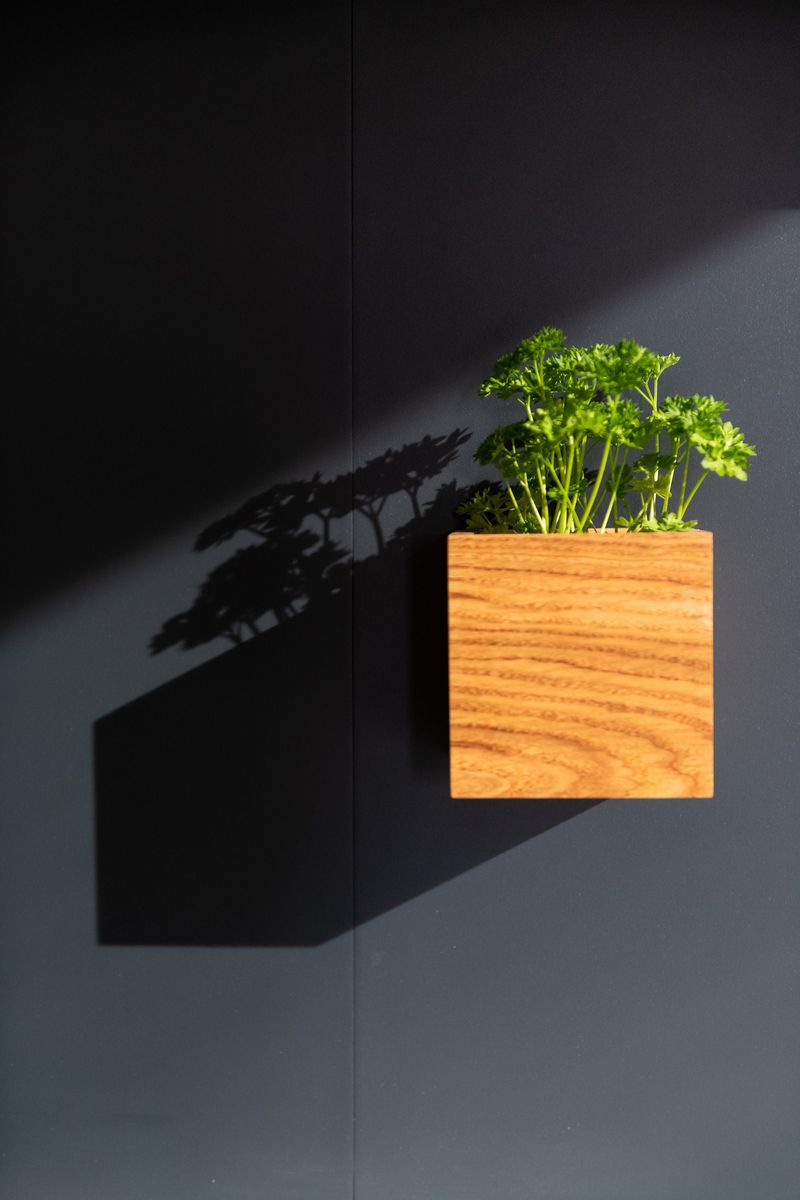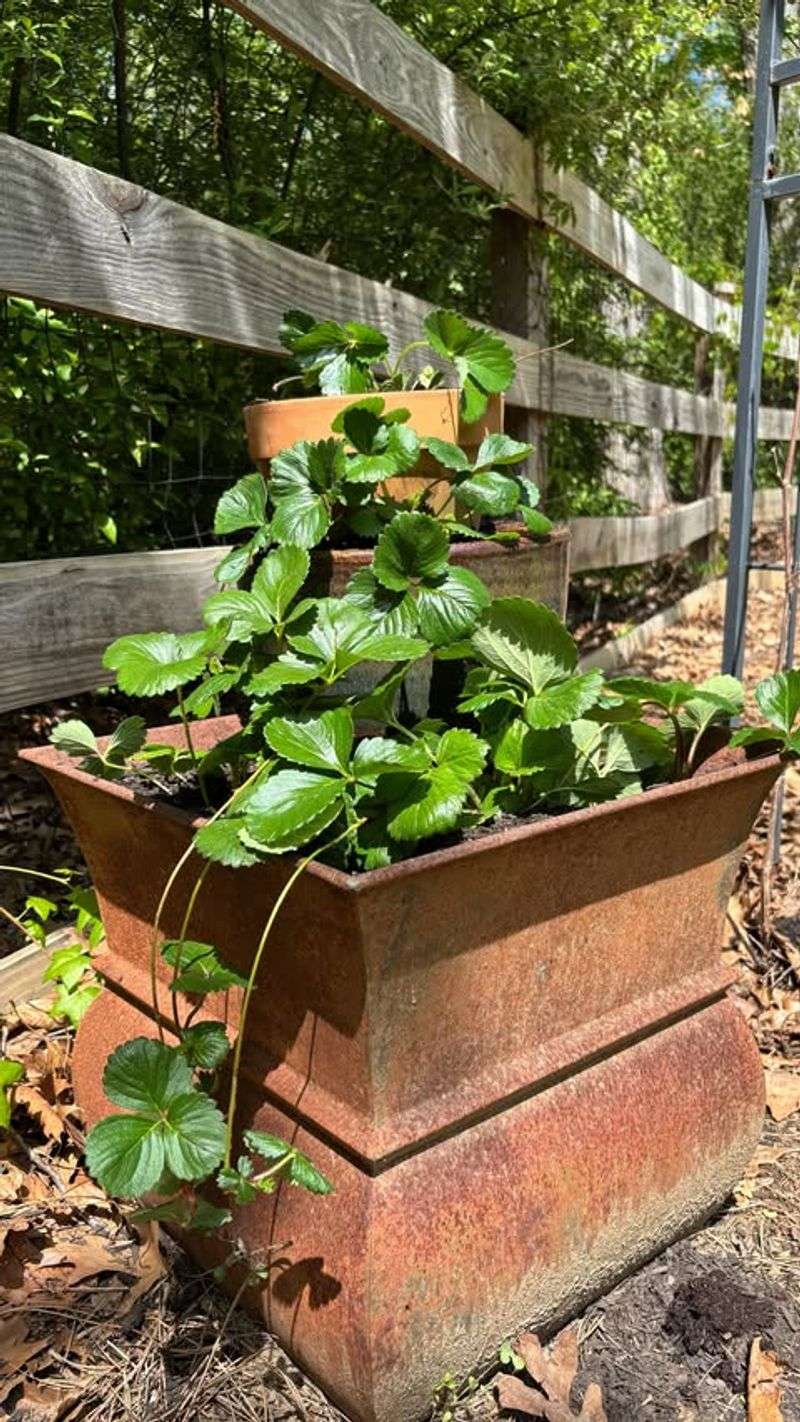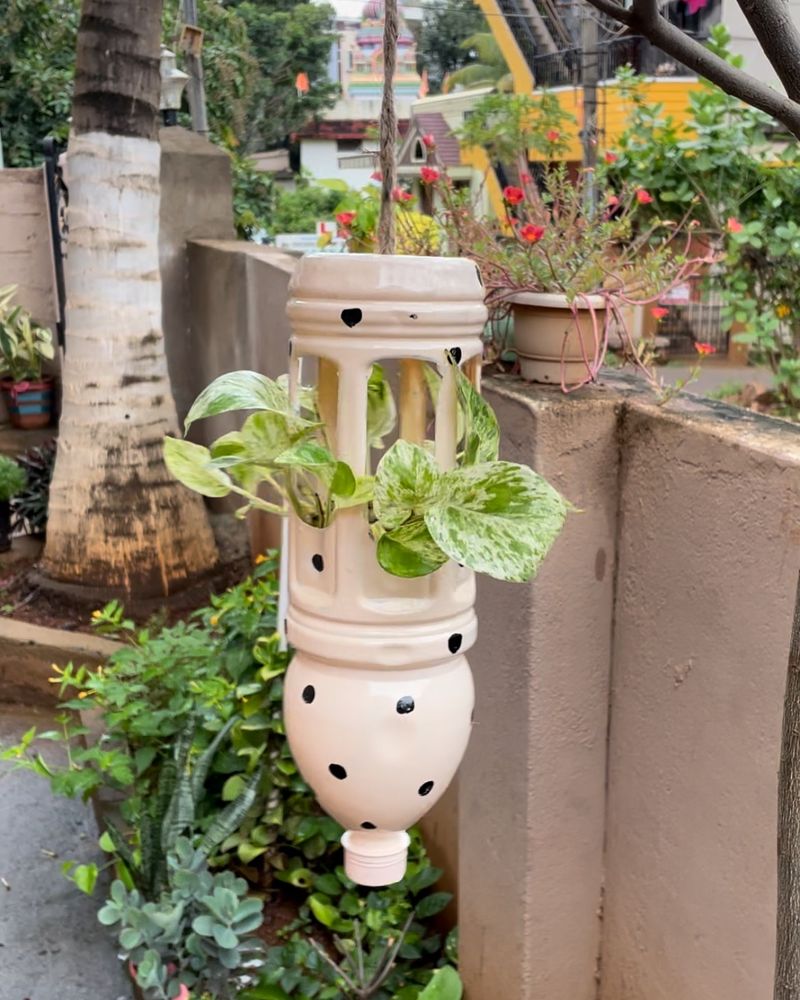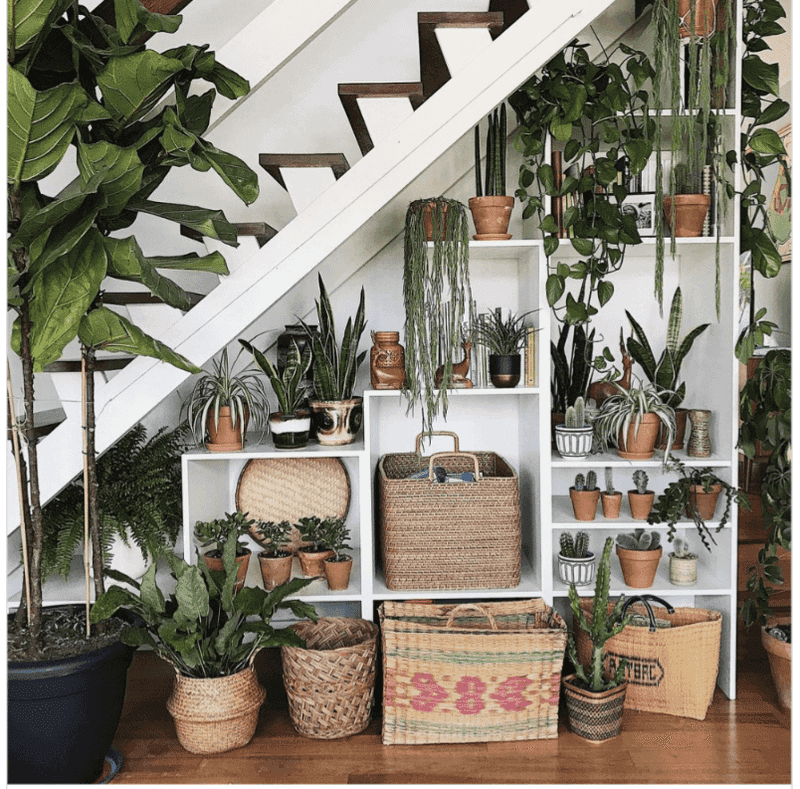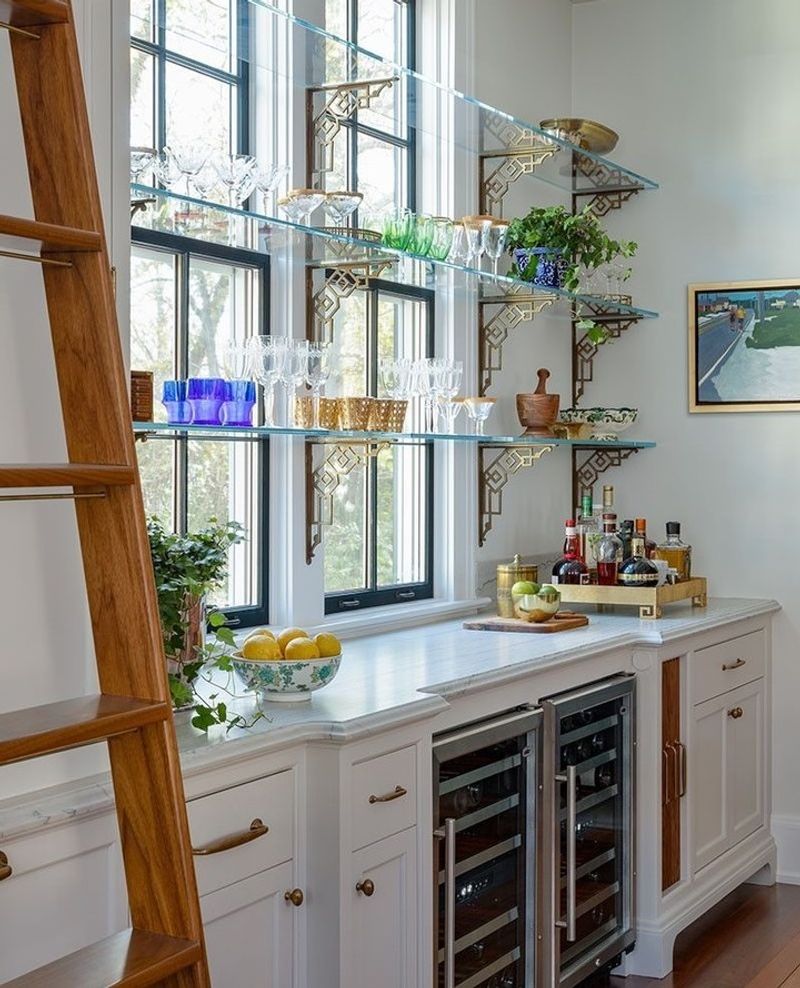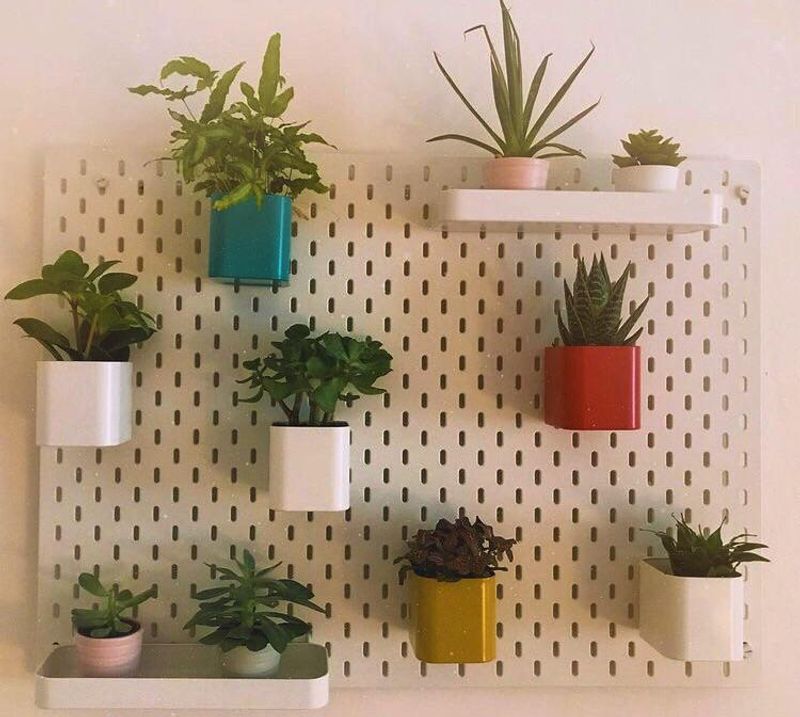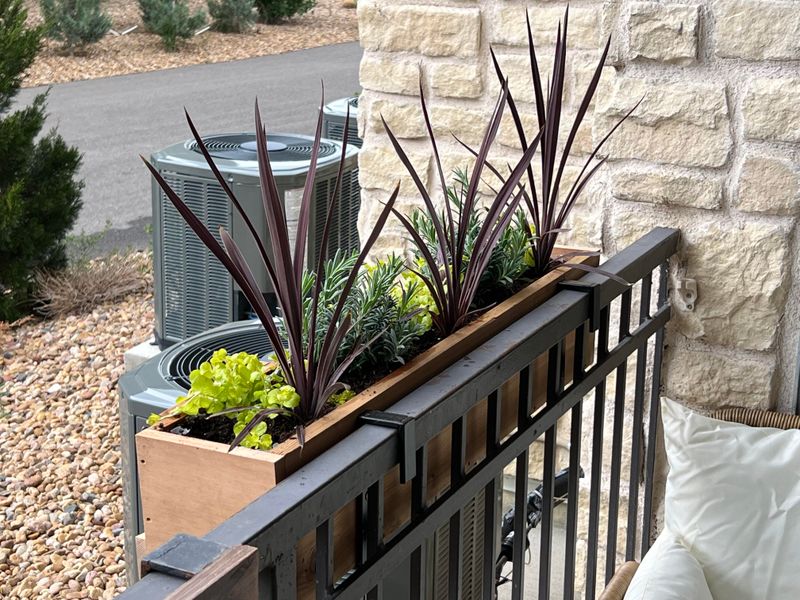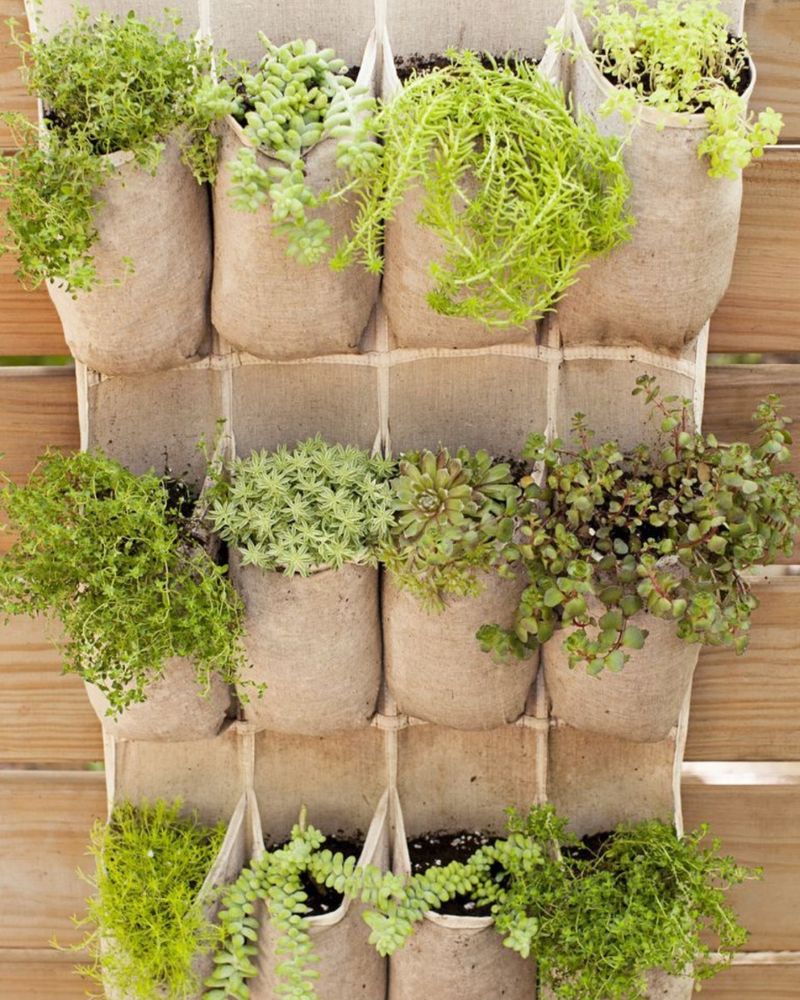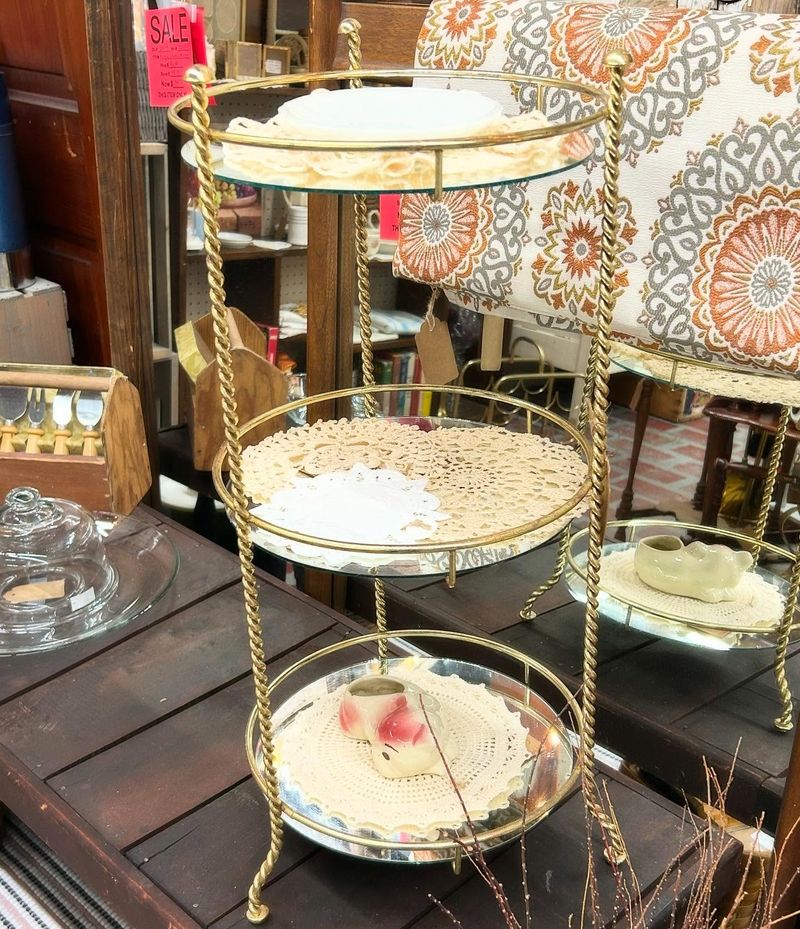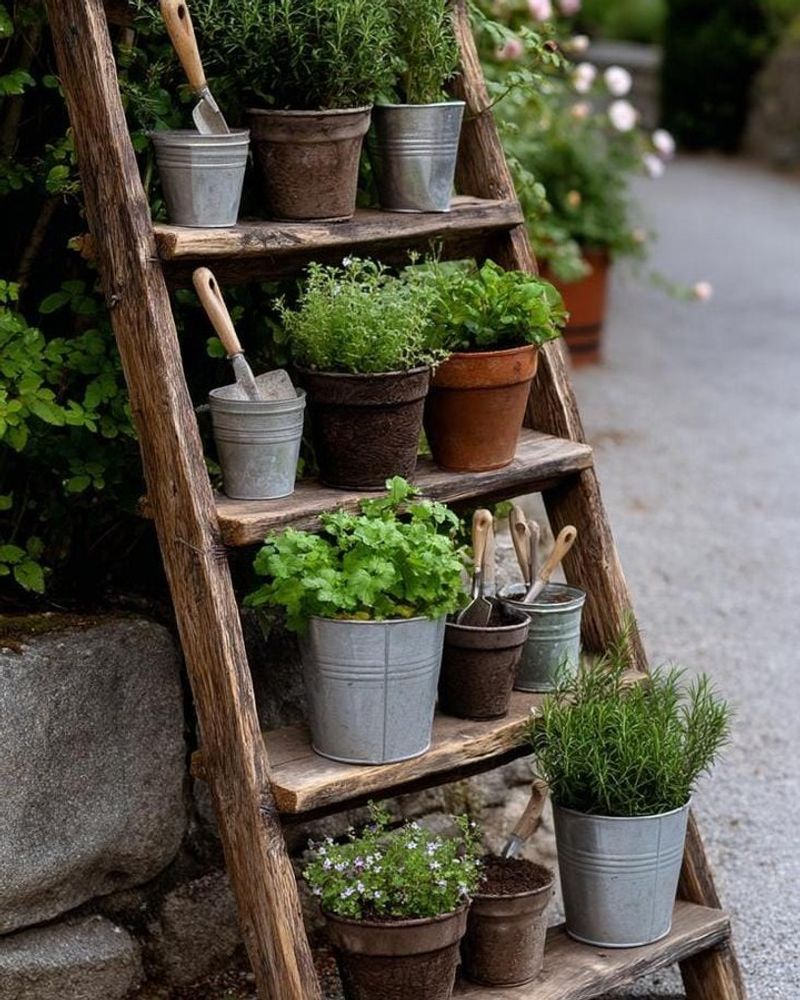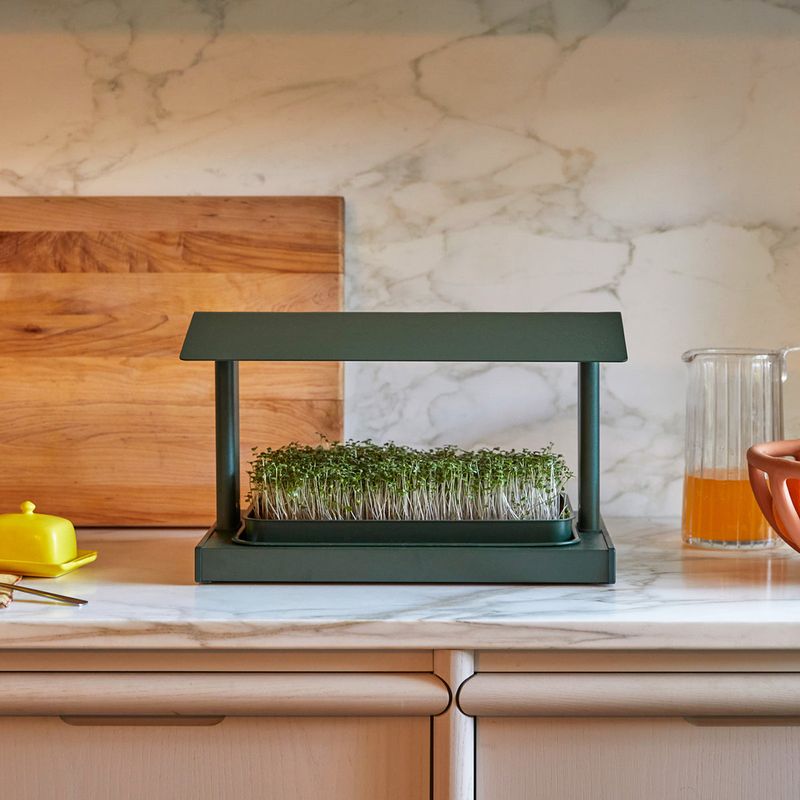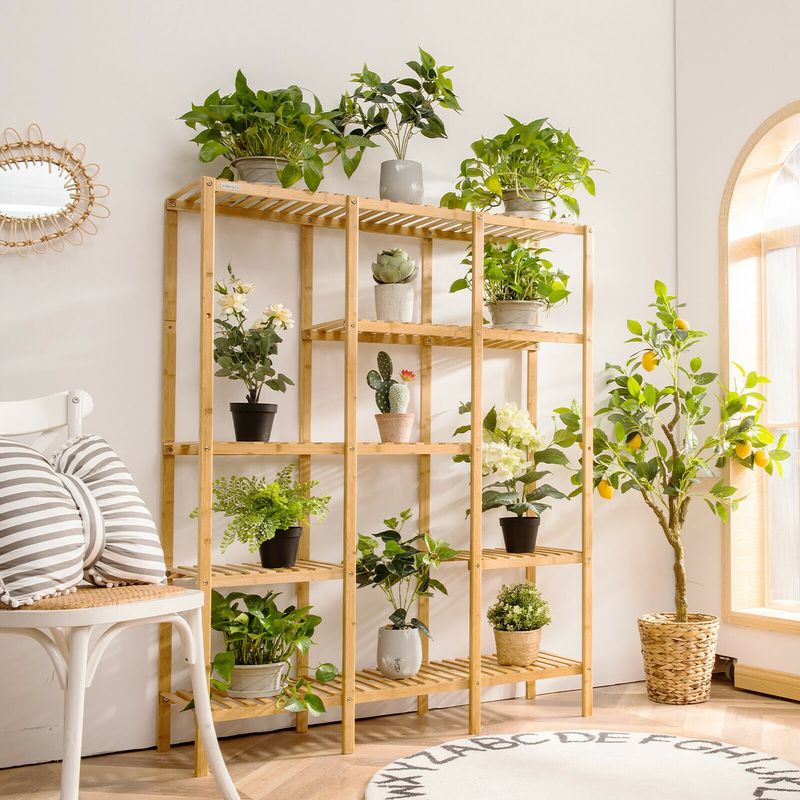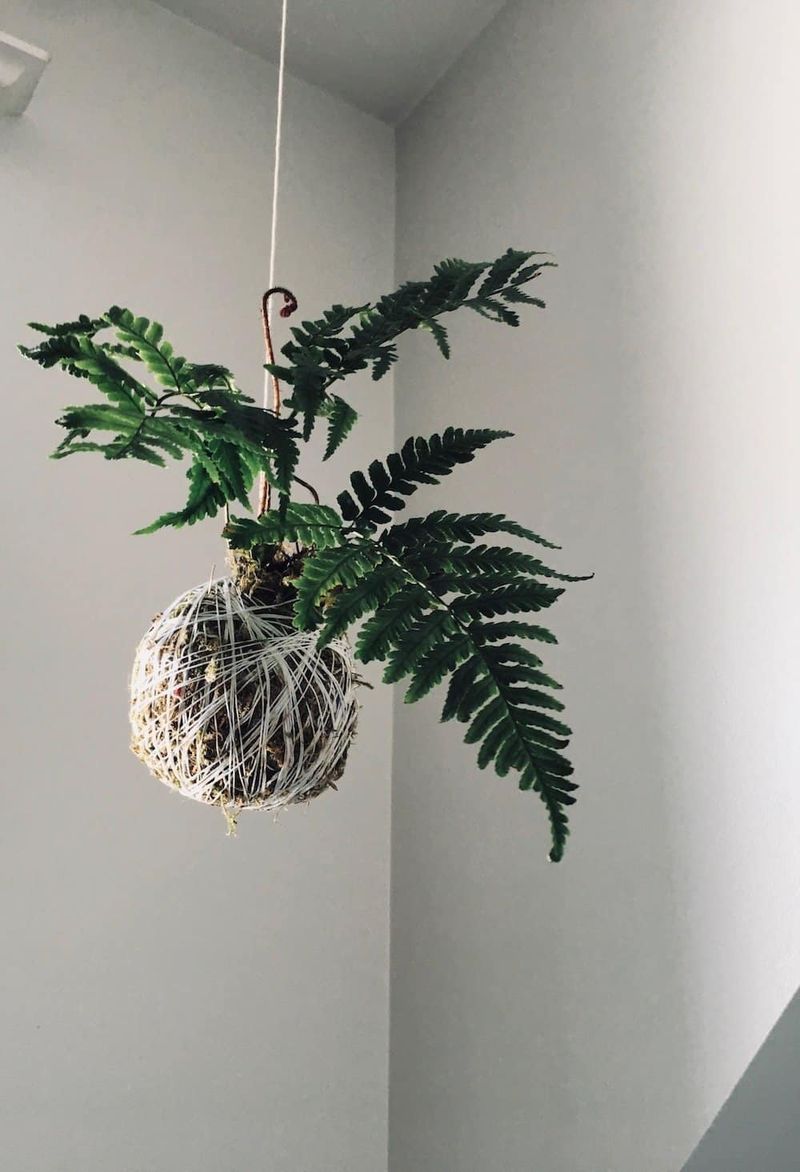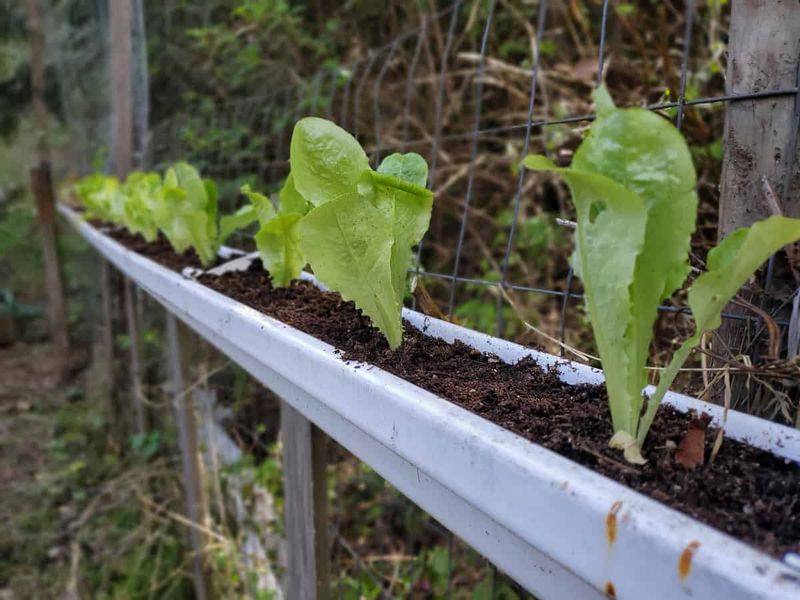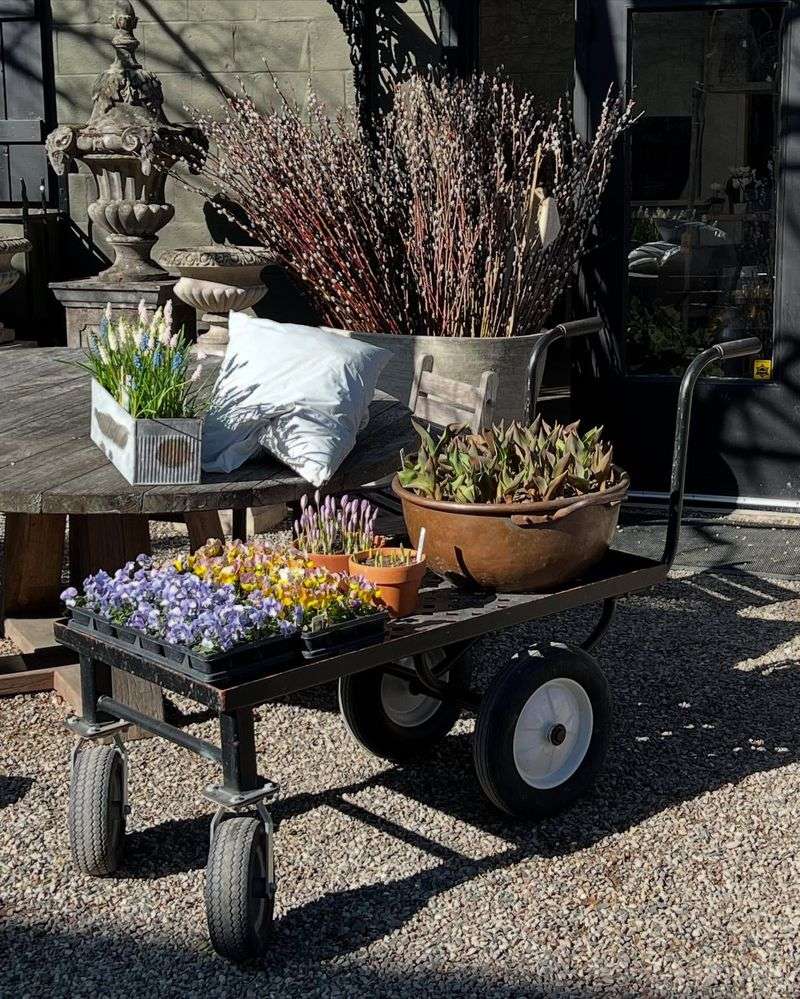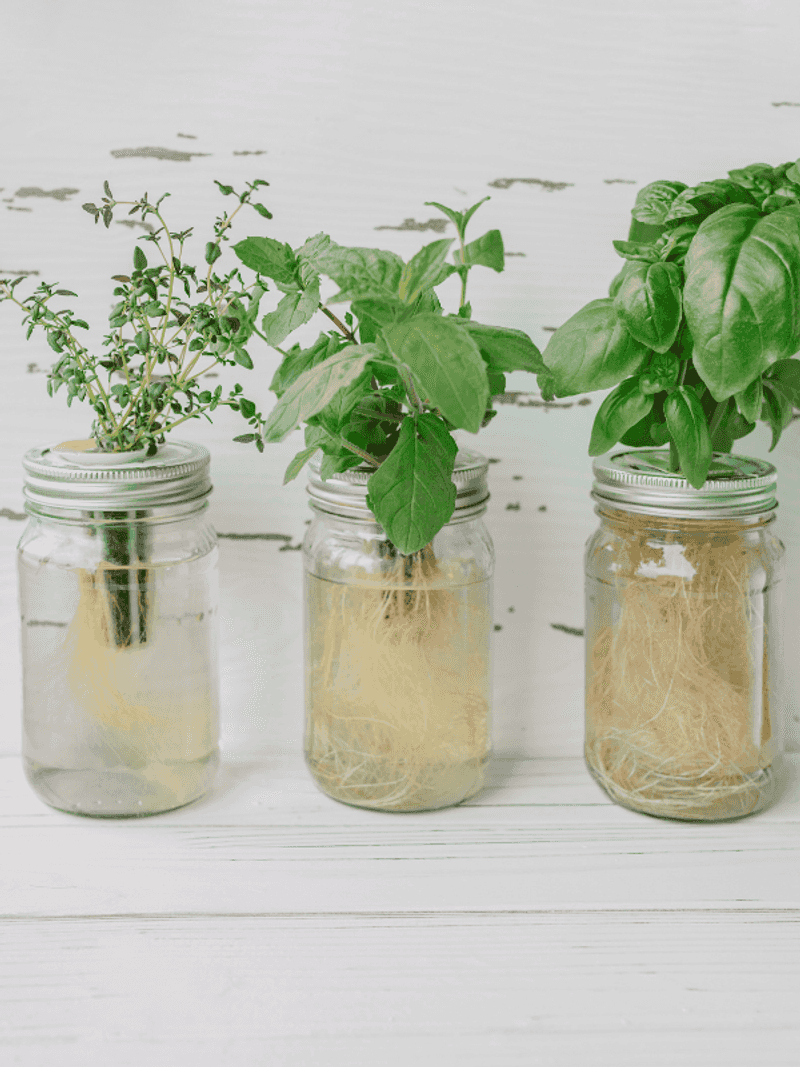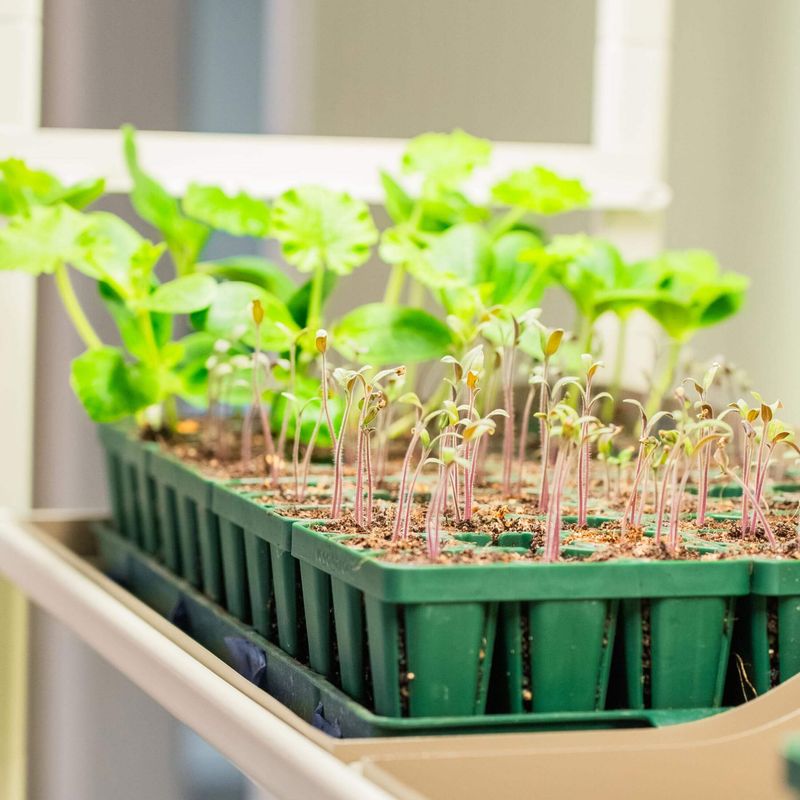Living in a small space doesn’t mean you have to give up on your garden dreams. I used to think I needed a yard to grow anything meaningful—turns out, a windowsill and a few pots are all you really need. That’s the beauty of a capsule garden.
With a handful of your favorite plants and a bit of creativity, you can craft a mini oasis that fits your space and your routine. It’s all about quality over quantity—think fresh herbs, trailing vines, and one statement pot that makes you smile every morning.
Whether you’re working with a tiny balcony, a sunny kitchen counter, or just a corner shelf, a capsule garden brings that calming, grounding feeling of nature into your daily life. It’s proof that even a little green can go a long way.
1. Magnetic Herb Planters
Turn your refrigerator door into a living herb wall with magnetic planters. These space-saving containers stick right to metal surfaces, transforming unused vertical space into a functional herb garden.
Choose small herbs like thyme, oregano, and basil that don’t need deep soil. The beauty of this setup is how accessible your herbs become while cooking – just reach over and snip what you need.
I installed these in my galley kitchen where countertop space was non-existent. Guests always comment on how clever the solution is, especially when they see me grab fresh herbs while cooking.
2. Stackable Terracotta Towers
Standard terracotta pots become space-saving wonders when stacked in a vertical tower. Start with a large base pot, then place progressively smaller ones on top, securing each with a central rod or strong adhesive.
Plant trailing varieties like strawberries or creeping thyme in the sides of each pot. The cascading effect creates visual interest while maximizing your growing space in a footprint no larger than a dinner plate.
My apartment balcony only gets sun in one corner, so concentrating plants in a vertical stack lets me make the most of that precious sunny spot instead of spreading containers across the floor.
3. Hanging Bottle Garden
Repurpose plastic bottles into suspended planters that occupy otherwise unused airspace. Cut windows in the sides, drill drainage holes, fill with soil, and hang horizontally from sturdy cord or wire.
These upcycled containers work brilliantly for leafy greens, herbs, and compact flowers. The clear plastic allows you to monitor soil moisture easily, and the horizontal orientation gives roots plenty of room to spread.
During apartment living, I hung these in front of my kitchen window, creating a privacy screen that also produced salad greens year-round. The bottles caught the light beautifully, especially in morning sun.
4. Under-Stair Garden Nook
That awkward space beneath staircases transforms into a perfect mini greenhouse with the addition of grow lights and compact shelving. The triangular footprint forces you to be selective, creating a naturally curated plant collection.
Group plants by light needs, placing shade-lovers at the back and sun-worshippers near the front. The enclosure often creates higher humidity, making this spot ideal for ferns and tropical plants that appreciate moisture.
The sloped ceiling in my under-stair space initially seemed limiting, but it actually created natural tiers for displaying plants of different heights. Even my tallest specimens found homes near the entrance.
5. Floating Window Shelves
Maximize natural light by installing narrow glass or acrylic shelves directly across window panes. These nearly invisible platforms capture sunlight without blocking it, creating perfect perches for sun-loving plants.
Secure the shelves with sturdy brackets that attach to the window frame rather than the wall. Select plants that thrive in bright conditions but remain compact, like succulents, African violets, or miniature cacti.
The morning light through my east-facing window bathes these shelves in golden light. When friends visit, they often don’t notice the plants until the sun hits them just right, creating what looks like floating greenery.
6. Pegboard Plant Wall
Hardware store pegboards transform into customizable living walls with just a few hooks and small containers. The adjustable system lets you rearrange plants as they grow or as seasons change.
Choose lightweight pots with drainage holes that can hang securely from pegboard hooks. Small air plants, succulents, and compact trailing vines work beautifully in this system without becoming too heavy for the board.
After installing one in my entryway, I found myself constantly tweaking the arrangement. The flexibility became a feature rather than a bug – my plant display evolved with my mood and the changing light throughout the year.
7. Railing Planter Boxes
Balcony railings offer prime real estate for narrow, specially designed planter boxes that hang on the outside of the railing. This clever positioning keeps your floor space completely free while adding greenery to your outdoor area.
Look for planters with secure locking mechanisms that prevent them from being dislodged by wind. The narrow but long design works perfectly for growing salad greens, herbs, and compact flowering plants like pansies or marigolds.
My third-floor balcony gets battered by wind, but these sturdy railing planters have weathered three seasons without budging. The outside-facing position also prevents soil from spilling onto the balcony floor during watering.
8. Repurposed Shoe Organizer
Canvas hanging shoe organizers become instant vertical gardens when filled with soil and small plants. Each pocket creates an individual growing space, perfect for herbs, strawberries, and compact leafy greens.
Punch drainage holes in each pocket bottom before adding soil. The fabric breathes naturally, preventing root rot while retaining enough moisture for plants to thrive. Hang on a sturdy hook or rod that can support the considerable weight when watered.
The kitchen door in my studio apartment became prime growing space with this hack. Having different herbs in each pocket made harvesting simple – I labeled each one with a clothespin to keep track of what was growing where.
9. Tiered Cake Stand Succulents
Vintage tiered cake stands create elegant miniature gardens that occupy minimal surface area. The graduated circles naturally draw the eye upward, making the display feel larger than its actual footprint.
Fill each level with a shallow layer of cactus soil and arrange small succulents or air plants in pleasing patterns. The open design allows air circulation while the raised edges prevent soil from spilling during watering.
Found at a thrift store, my three-tier silver stand sits on a tiny bathroom counter where it thrives in the humidity. The metallic finish reflects light onto the plants and adds an unexpected touch of garden glamour to a utilitarian space.
10. Ladder Plant Library
Wooden ladders, either leaning or freestanding, create instant vertical growing space with character. Each rung becomes a shelf for plants, while the angled design ensures all specimens receive adequate light.
Position the ladder near a window but not blocking direct paths. The staggered depths naturally accommodate plants of different sizes – larger pots on bottom rungs, smaller ones toward the top where stability matters more.
The weathered orchard ladder in my living room corner started as temporary plant storage during a move. Three years later, it’s become a permanent feature, showcasing my collection of pothos, ferns, and prayer plants in just two square feet of floor space.
11. Countertop Microgreens Station
Even the smallest kitchen can host a productive garden with a dedicated microgreens growing station. These nutrient-dense sprouts mature in just 7-14 days, providing constant harvests from minimal space.
Use shallow trays with drainage holes nestled in waterproof saucers. Stacking the trays in a tiered arrangement creates growing space for different varieties or succession planting. The entire setup needs just a square foot of counter space.
My north-facing kitchen window wasn’t bright enough for most plants, but microgreens thrive there with minimal fuss. The constant rotation of sprouts ensures I always have something fresh to snip onto sandwiches and salads.
12. Bookshelf Conversion Garden
Transform an ordinary bookshelf into a multi-level growing space by lining shelves with waterproof material. The structure already exists – you’re simply repurposing it for plants instead of books.
Lower shelves work well for larger specimens that need less light, while upper shelves are perfect for sun-loving plants. Install simple grow lights under each shelf to ensure adequate illumination for all levels, especially during winter months.
An old IKEA bookcase became my plant haven after covering shelves with vinyl shelf liner. The white shelving reflects light effectively, and the standardized shelf height creates a clean, organized look despite housing over 20 plants in a 2×3 foot footprint.
13. Hanging Kokedama String Garden
Japanese moss balls, or kokedama, suspend plants in mid-air using minimal materials and zero containers. The soil-and-moss spheres become living ornaments that occupy only the airspace in your room.
Create these by wrapping plant root balls in moss-covered soil, then securing with twine. Hang at different heights from hooks, curtain rods, or decorative branches. The technique works beautifully for ferns, ivy, philodendrons, and flowering plants like violets.
Watering involves taking each ball down for a quick soak, which initially seemed tedious. Yet the ritual has become a mindful moment in my week, a chance to check in with each plant individually while appreciating their unique growth patterns.
14. Upcycled Gutter Garden
Vinyl rain gutters mounted on walls or fences create long, narrow planters perfect for shallow-rooted crops. Cut gutters to your preferred length, cap the ends, drill drainage holes, and secure to any vertical surface that receives adequate light.
The linear design works brilliantly for lettuce, spinach, radishes, and strawberries. Multiple gutters mounted at different heights create a cascading effect while maximizing growing space in a slim profile that projects just inches from the wall.
Along my narrow apartment walkway, three six-foot gutters yield enough salad greens for weekly harvests. The white vinyl brightens the previously drab concrete wall and turns an unused passage into productive growing space.
15. Rolling Cart Garden
Metal utility carts with wheels become mobile gardens that follow the sun throughout the day. The multi-tiered design accommodates numerous plants while the mobility ensures optimal light exposure as seasons change.
Choose carts with open-grid shelving for air circulation and add clear plastic trays to catch water. Group plants by watering needs, with drought-tolerant varieties on top shelves and thirstier specimens below where they catch runoff.
During summer, my plant cart spends mornings on the east balcony and afternoons on the west side. Come winter, it rolls indoors next to the sunniest window. This flexibility has dramatically improved plant health compared to stationary setups.
16. Mason Jar Wall Hydroponics
Transform a sunny wall into a soil-free growing system using mason jars, wooden mounting boards, and simple hydroponics. The transparent jars showcase both the decorative roots and the water level, adding visual interest.
Mount jars sideways using metal clamps attached to a wooden board. Cut holes in the lids for plants to grow through, and fill jars with water and liquid nutrients. Herbs like mint, basil, and oregano thrive in this system with minimal maintenance.
The kitchen wall that was too narrow for traditional shelving now houses eight thriving herb plants in jars. Watching the intricate root systems develop has become almost as satisfying as harvesting the herbs themselves.
17. Under-Bed Microgreens Farm
The forgotten space beneath your bed becomes a productive growing area with shallow trays, grow lights, and a simple timer. This hidden garden utilizes otherwise wasted space while keeping your visible living area plant-free if desired.
Use wheeled platforms to slide trays out for maintenance and harvesting. The consistent temperature and protection from drafts creates ideal conditions for microgreens, mushrooms, and even starter seedlings for eventual transplant elsewhere.
Living in a studio apartment meant choosing between furniture and plants until I discovered under-bed farming. Now my bed frame sits 4 inches higher, creating room for six growing trays that produce weekly harvests without sacrificing a single square inch of usable space.


